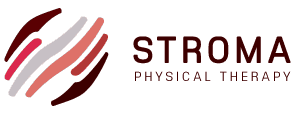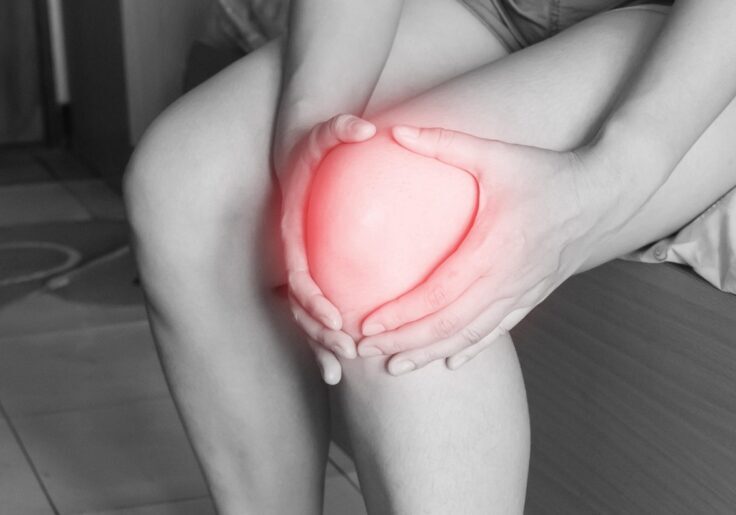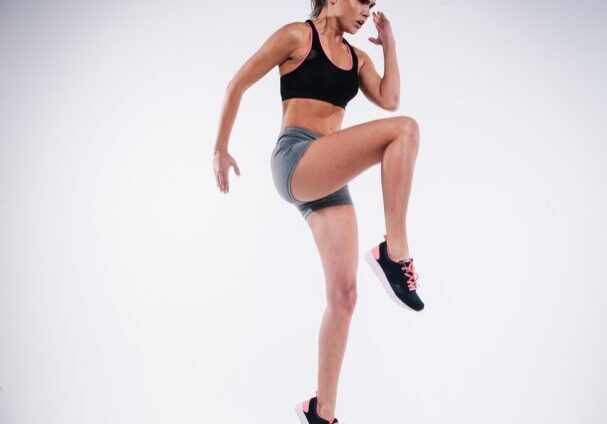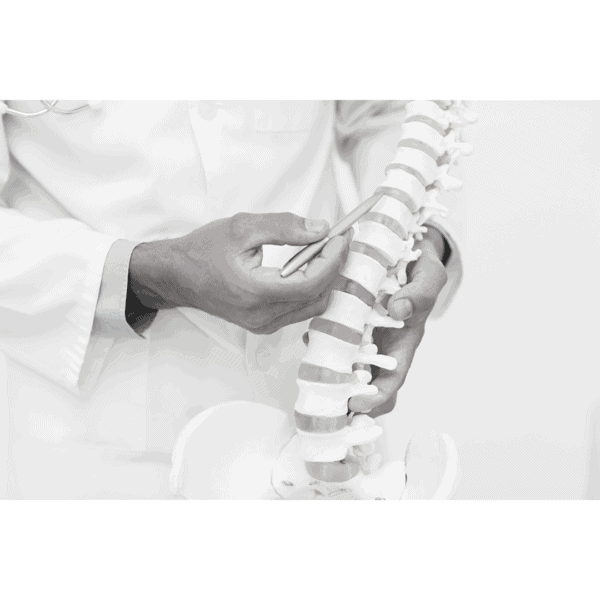
It is no secret that low back pain plagues many, if not all of us, to various degrees across our lifespan. However, the role of spinal health to our overall well-being cannot be understated. The spinal column is our body’s central support structure. As the spinal cord is the first thing to develop when we are a growing fetus, the spinal column protects the delicate cord from potential damage. The various regions of the spinal column and cord work together to send messages from the brain to different areas of the body, including our organs, making the armory of the spine over the spinal cord vital in protecting healthy functioning. The spine does not only act as armor for our delicate nervous system. It is mechanically important as it serves as a central anchor to produce healthy movements such as walking and standing. It is also our central beam which helps us maintain an upright posture. Standing upright with two legs, or bipedalism, separates us from all other vertebrates on the planet!
Additionally, our spine allows for flexible movements, such as bending and twisting. The spinal column is an essential component in human motion and it is central to the kinetic chain, acting as a transmitter of force from the upper body to the lower body and vice versa. It is clear that a healthy spine is a key aspect of leading a healthy lifestyle. Spinal exercises, especially in the low back where the spinal vertebrae are the largest and support the most body weight are essential to health and wellness. Some studies suggest that the relatively quick evolution of the ability to walk on two legs may have had a substantial impact on modern human health. Thus, humans are more affected with spinal disease, especially in the low back, than other non-human primates.
Exercising the spine is not only important for healthy organ function and motion, but since it is naturally more predisposed to stress from bipedalism, it is important to incorporate low back exercises into your regular routine to prevent decline.
Did reading that implore you to address your spinal health further? Here are a few suggestions to apply today:
Pelvic Clock – Transversus Abdominal and Obliques Activation
I love this exercise as it can be used as a way to warm up to other exercises. It is subtle but effective at awakening your abdominals and improving stability of the lumbo-pelvic junction.
Lie on your back with your knees bent and your feet shoulder width apart. Imagine that there is a clock face resting on your abdomen with a Marble in the center of the clock.
12 o’clock: Slowly draw in your stomach muscles toward your spine and tilt your pelvic back flattening your back onto the mat. Imagine the marble rolling towards 12 o’clock. This puts your pelvis in a posterior tilt.
6 o’clock: Tilt your pelvis forward rolling onto your tailbone. The stomach muscles will relax and your back should arch off the mat slightly. Imagine the marble rolling towards 6 o’clock. This puts your pelvis in an anterior tilt.
3 o’clock: Drop your left hip bone down toward the mat and as you do this, your right hip bone should lift toward the ceiling. Be careful not to hike your hip up toward your shoulder. The marble will roll towards 3 o’clock.
9 o’clock: Repeat as for 3 o’clock but drop your right hip bone down toward the mat and the marble will roll towards 9 o’clock.
All motion should come from your pelvis (relax your upper back and neck).
Avoid pushing through your feet.
Minimize the leg movement from side to side.
You can do this 5X in each direction, and then for fun, roll the marble clockwise 5X and counterclockwise 5X. 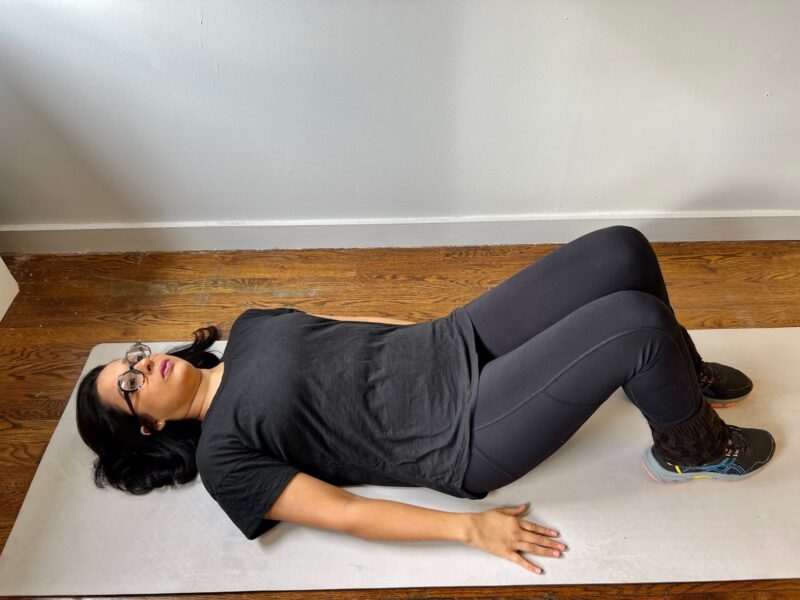
Flexibility: Child’s Pose with Side Stretch
Start on all fours and push your hips back so your buttocks rest on your heels. You may want to have your knees apart to be more comfortable. Reach forward with your hands and hold the stretch. Next, reach to one side with both hands and hold the stretch. Then, reach to the other side and hold the stretch.
Purpose: To relax tight muscles of the lumbar spine and improve spinal flexibility into flexion.
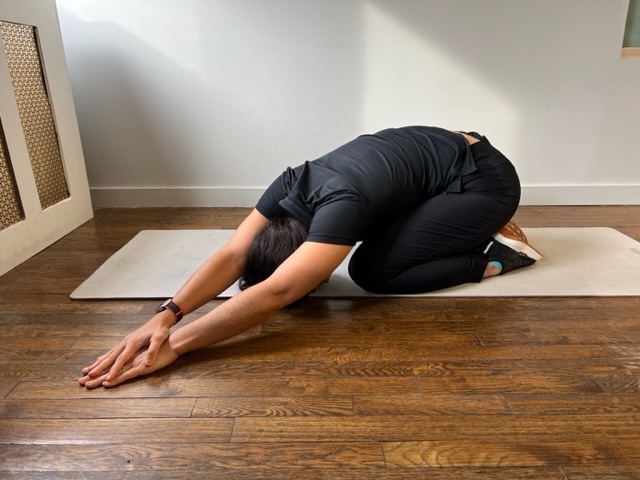
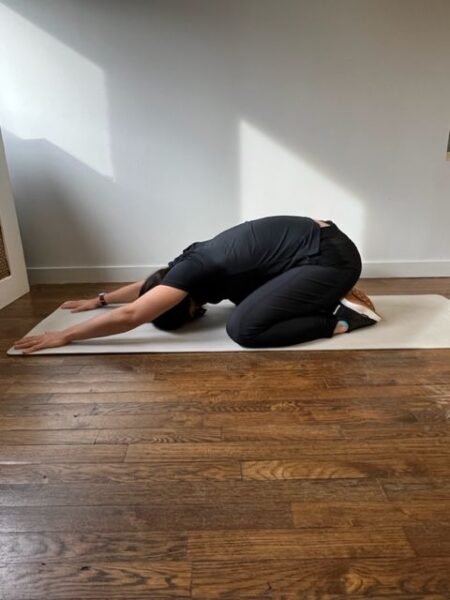
Still unsure? Contact us to evaluate and prescribe the best possible exercises to improve your spinal health.
